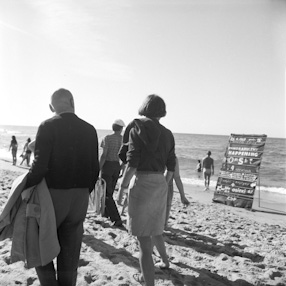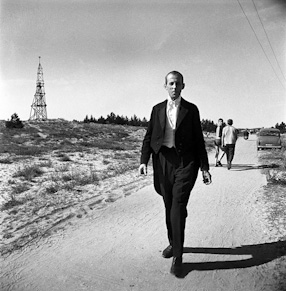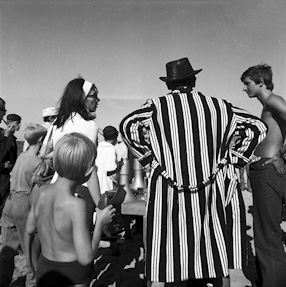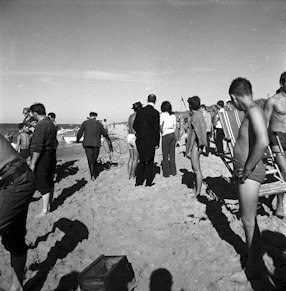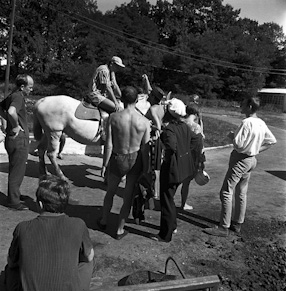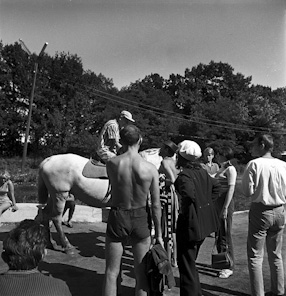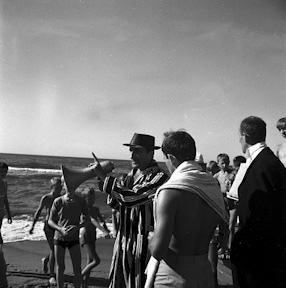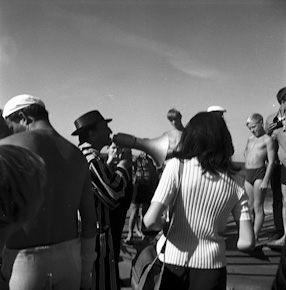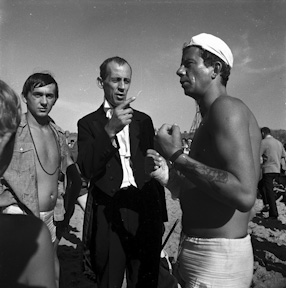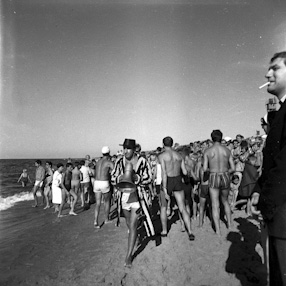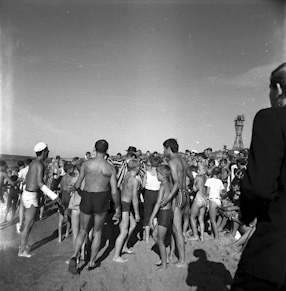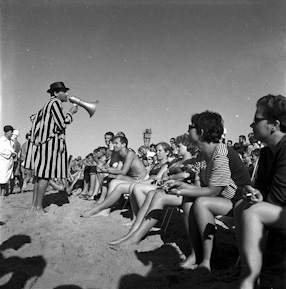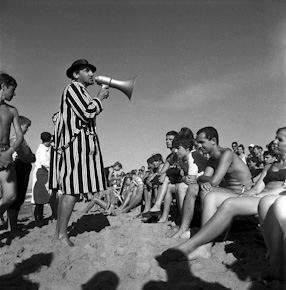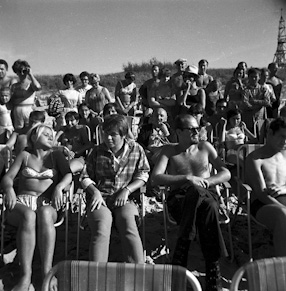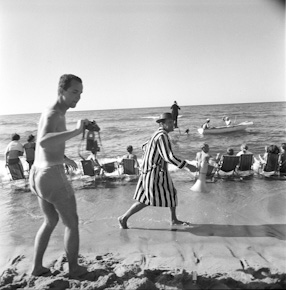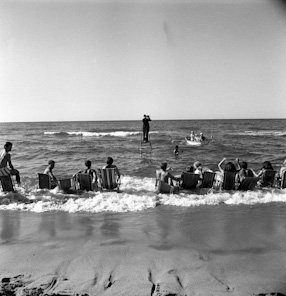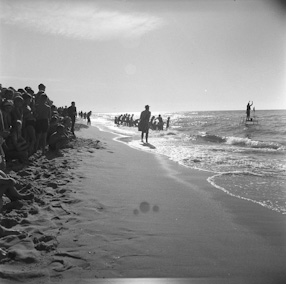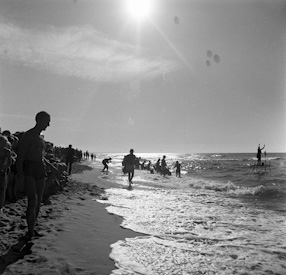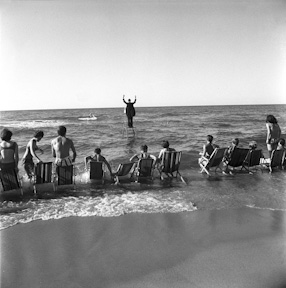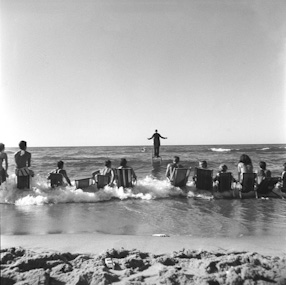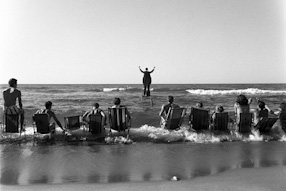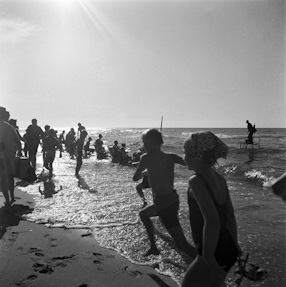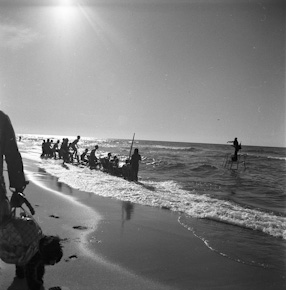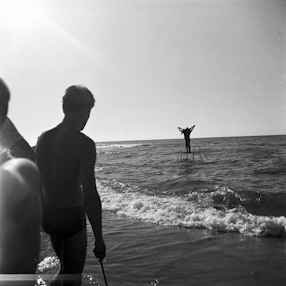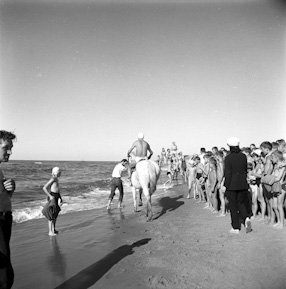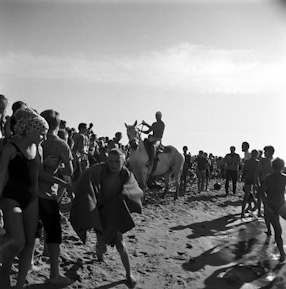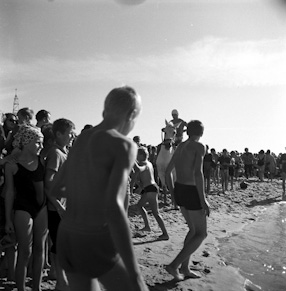Tadeusz Kantor's „Panoramic Sea Happening”, 1967 (1-50/131)
The happening was organized in cooperation with the Foksal Gallery during the 5th Plener Koszaliński in Osieki. During the annual artistic plein-air in this small seaside town, the whole artistic community got together.
The happening took place on August 23, 1967 in Łazy, a small town near Osiek. It was the most spectacular and complex of all of Kantor's happenings. Organized for only a couple of participants (mostly for members and friends of the Foksal Gallery), it had an enormous audience among the plein-air's guests and tourists relaxing on the beach. The happening consisted of four parts: "Sea Concert," "Erotic Barbuyage," "Agrarian Culture on the Sand," and "Medusa Raft."
During the first part (“Sea Concert”) the audience was seated on deckchairs by the seashore. In some distance from the shore a man dressed in a tuxedo (Edward Krasiński) was conducting the waves while standing on a platform submerged in the water. In “Erotic Barbuyage" several women (among whom were Anka Ptaszkowska and Maria Stangret) rolled around in the sand mixed with tomato sauce (“in the euphoric state / and in a convulsive rhythm / epileptic rhythm would be perfect / the whole should / make an impression of a lively matter / unidentified / losing contours and bodies’ shapes / in a complete assemblage (…).” “Zatopienie” took place at the same time. Members of the gallery (Wiesław Borowski, Zbigniew Gostomski i Mariusz Tchorek) brought a huge trunk that had words “the Foksal Gellery” written on it onboard. The box, which contained the gallery’s documentation, was thrown from the boat into the sea. In the following part of the happening, “Agrarian Culture on the Sand,” the viewers and participants were given newspapers that they were asked to “plant” in the sand. Soon the beach looked like an absurd field of planted newspapers, arranged carefully and in various distance from each other. The last part, “Medusa Raft,” was based on a famous painting by Théodore Géricault. On a table covered with a white cloth that was standing on the beach there were several reproductions of the painting that were to be distributed among to the viewers. Rather than make a faithful reconstruction, they were supposed to create a tableau vivant - a cheap and modern replica based on these reproductions and with the use of all possible beach props like air mattresses, flippers, and masks. During the rehearsal of the reconstruction of “Medusa Raft” Jerzy Bereś, a Cracow artist, attached a thick rope to a pole, put the loop around his neck and started walking around it. Some of the happening’s elements had inevitable political connotations, including “Agrarian Culture on the Sand” where a newspaper, a propaganda tool, was buried in the sand. The title itself ridiculed the communist newspeak and its ideology.
Not without reason the happening was called “panoramic” as a section of the beach became a set for a great event directed by Kantor, who ran around the beach giving orders through a megaphone. The point of the happening was a clash of several unrelated “ready-made elements” taken from high and low registers of reality such as distant historical events, artistic films represented by a well-known painting or the trivial everyday life of a seaside resort.
In response to Kantor’s spectacular happening, Włodzimierz Borowski performed his 7th Syncretistic Show entitled “Taking the Hat Off.”

